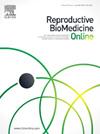Machine learning tool for predicting mature oocyte yield and trigger day from start of stimulation: towards personalized treatment
IF 3.7
2区 医学
Q1 OBSTETRICS & GYNECOLOGY
引用次数: 0
Abstract
Research question: Can machine learning tools predict the number of metaphase II (MII) oocytes and trigger day at the start of the ovarian stimulation cycle?
Design: A multicentre, retrospective study including 56,490 ovarian stimulation cycles (primary dataset) was carried out between 2020 and 2022 for analysis and feature selection. Of these, 13,090 were used to develop machine learning models for trigger day and the number of MII prediction, and another 5103 ovarian stimulation cycles (clinical validation dataset) from 2023 for clinical validation. Machine learning algorithms using deep learning were developed using optimal features from the primary dataset based on correlation.
Results: A tool with two novel progressive machine learning algorithms using deep learning was able to predict the trigger day and number of MII oocytes: mean absolute error 1.60 (95% CI 1.56 to 1.64) and 3.75 (95% CI 3.65 to 3.86), respectively. The R2 value for the algorithm to predict the number of MII in the interquartile (Q3–Q1/P75–P25) range was 0.88; the entire dataset was 0.70 after removing the outliers at the planning phase of the stimulation cycle, which shows high accuracy. The interquartile root mean square error was 1.10 and 0.66 for the trigger day and the number of oocytes algorithm, respectively.
Conclusion: The tool using deep learning algorithms has high prediction power for trigger day and number of MII outcomes, and can be retrieved from patients at the start of the ovarian stimulation cycle; however, inclusion of more data and validation from different clinics are needed.
用于预测成熟卵母细胞产量和从刺激开始触发日的机器学习工具:走向个性化治疗。
研究问题:机器学习工具能否预测中期II (MII)卵母细胞的数量并在卵巢刺激周期开始时触发天数?设计:一项多中心回顾性研究,包括2020年至2022年间56490个卵巢刺激周期(主要数据集),用于分析和特征选择。其中,13090个用于开发触发日和MII预测数量的机器学习模型,另外5103个卵巢刺激周期(临床验证数据集)从2023年开始用于临床验证。使用深度学习的机器学习算法是利用基于相关性的主要数据集的最优特征开发的。结果:使用深度学习的两种新型渐进式机器学习算法的工具能够预测MII卵母细胞的触发日期和数量:平均绝对误差分别为1.60 (95% CI 1.56至1.64)和3.75 (95% CI 3.65至3.86)。该算法预测四分位数(Q3-Q1/P75-P25)范围内MII个数的R2值为0.88;在去除增产周期规划阶段的异常值后,整个数据集的精度为0.70,显示出较高的精度。触发天数和卵母细胞数算法的四分位数均方根误差分别为1.10和0.66。结论:使用深度学习算法的工具对MII结果的触发天数和数量具有较高的预测能力,并且可以从卵巢刺激周期开始的患者中检索;然而,需要更多的数据和来自不同诊所的验证。
本文章由计算机程序翻译,如有差异,请以英文原文为准。
求助全文
约1分钟内获得全文
求助全文
来源期刊

Reproductive biomedicine online
医学-妇产科学
CiteScore
7.20
自引率
7.50%
发文量
391
审稿时长
50 days
期刊介绍:
Reproductive BioMedicine Online covers the formation, growth and differentiation of the human embryo. It is intended to bring to public attention new research on biological and clinical research on human reproduction and the human embryo including relevant studies on animals. It is published by a group of scientists and clinicians working in these fields of study. Its audience comprises researchers, clinicians, practitioners, academics and patients.
Context:
The period of human embryonic growth covered is between the formation of the primordial germ cells in the fetus until mid-pregnancy. High quality research on lower animals is included if it helps to clarify the human situation. Studies progressing to birth and later are published if they have a direct bearing on events in the earlier stages of pregnancy.
 求助内容:
求助内容: 应助结果提醒方式:
应助结果提醒方式:


